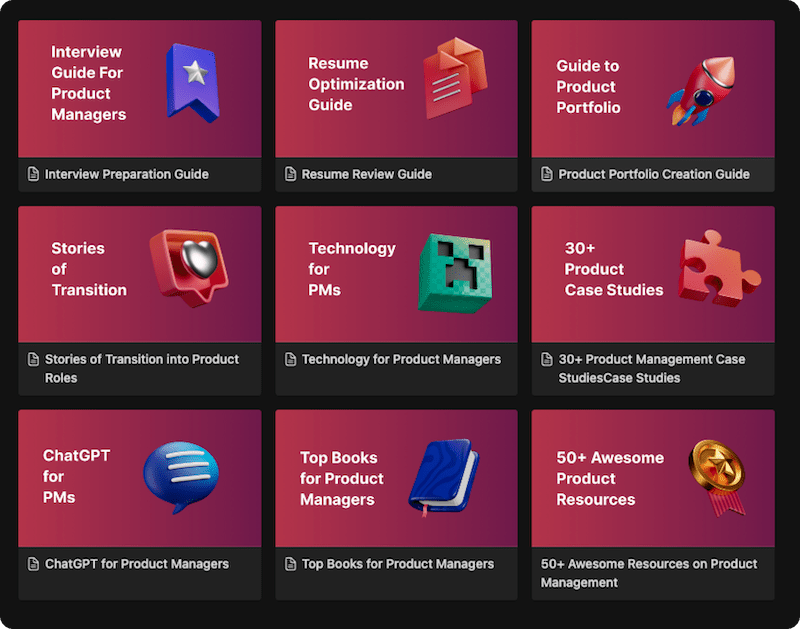You have a new product idea, and you’re convinced it’s a winner. You’ve done the market research, identified a customer need, and sketched out the core features. But then you look at the competitive landscape, and a daunting question hits you: with so many other options out there, why would a customer choose your product? How do you avoid becoming just another “me too” option, lost in a sea of similar choices?
This is where Product Differentiation becomes the most critical strategic exercise for any product manager, marketer, or entrepreneur. It’s the process of answering that fundamental question and building a sustainable competitive advantage. It’s not just about being different for the sake of it; it’s about being uniquely valuable.
This guide will make you a master of this essential concept. We’ll explore the core strategies of product differentiation, provide a step-by-step framework for crafting a compelling Unique Value Proposition (UVP), and analyze real-world examples from brands you use every day. By the end, you’ll have a clear playbook for making your product stand out and win in a crowded market.
The Three Core Types of Product Differentiation
Differentiation strategies generally fall into three main categories, based on how customers perceive the differences between products.
1. Vertical Differentiation
This is all about quality and objective ranking. In vertical differentiation, if two products were the same price, there would be a clear, objective winner that most consumers would agree is “better.” The differences are measurable.
- Key Drivers: Quality, speed, durability, efficiency, price.
- Customer Choice: Based on objective measures. A customer chooses based on which product performs better on a specific, measurable scale.
- Examples:
- Intel processors are often chosen based on their superior performance and speed.
- A generic brand battery vs. a Duracell battery that is marketed to last longer.
- A high-end designer handbag vs. a fast-fashion alternative.
2. Horizontal Differentiation
This is about personal preference. In horizontal differentiation, there is no objective “best” choice. The products are of similar quality and price, so the decision comes down to subjective taste.
- Key Drivers: Flavor, color, style, design, brand identity.
- Customer Choice: Based on subjective preference.
- Examples:
- Choosing Coca-Cola vs. Pepsi. There is no objectively “better” cola; it’s purely a matter of taste.
- Selecting a car color.
- Picking a specific brand of bottled water.
3. Mixed Differentiation
In reality, most products in complex markets use a mix of both vertical and horizontal differentiation. A customer’s choice is a blend of objective facts and subjective feelings.
- Key Drivers: A combination of features, brand, price, and personal taste.
- Customer Choice: A complex decision weighing multiple factors.
- Examples:
- Smartphones: A customer might compare the objective camera specs (vertical) but ultimately choose an iPhone over an Android because they prefer the iOS user interface and design aesthetic (horizontal).
- Cars: A buyer might compare gas mileage and safety ratings (vertical) but also have a strong preference for a particular brand’s reputation and style (horizontal).
The Unique Value Proposition (UVP): Articulating Your Differentiation
Having a differentiated product is only half the battle. You must be able to communicate that difference clearly and concisely. This is the role of the Unique Value Proposition (UVP), also known as a Unique Selling Proposition (USP).
A UVP is a clear statement that explains the benefit you offer, how you solve your customer’s problem, and what distinguishes you from the competition.
A great UVP typically has three components:
- A Clear Headline: The main benefit in a single, memorable sentence.
- A Sub-headline or Paragraph: A 2-3 sentence explanation of what you offer, for whom, and why it’s useful.
- Key Features or Bullet Points: 3-4 key benefits or features that support your claim.
Your UVP is the DNA of your differentiation strategy, made tangible for the customer.
How to Develop a Winning Product Differentiation Strategy
Step 1: Deeply Understand Your Customer
Differentiation begins and ends with the customer. You cannot create meaningful differentiation without understanding what your target audience truly values.
- Tools: Conduct user interviews, send out surveys, analyze customer feedback, and create detailed user personas.
- Key Question: What are their biggest pain points, unmet needs, and desired outcomes?
Step 2: Analyze the Competitive Landscape
You need to know what your customers’ alternatives are.
- Tools: Perform a competitive analysis. Map out your competitors’ features, pricing, and marketing messages.
- Key Question: What are they doing well? Where are the gaps in the market that they are not addressing?
Step 3: Identify Your Key Differentiators
Based on your customer and market research, brainstorm the potential ways you can be different. Don’t limit yourself to just features.
- Product Performance: Can you be faster, more reliable, or more efficient?
- Design & User Experience: Can you be simpler, more intuitive, or more beautiful?
- Quality & Durability: Can you build a product that lasts longer and feels more premium?
- Price: Can you be the most affordable option (cost leadership) or a premium, high-end choice?
- Customer Service: Can you offer a level of support and service that your competitors can’t match?
- Brand & Story: Can you build a brand that resonates with a specific community or value system?
Step 4: Craft and Test Your Unique Value Proposition
Once you’ve chosen your core differentiators, articulate them in a clear UVP.
- Framework: Use the Value Proposition Canvas to map your product’s features (Gain Creators, Pain Relievers) directly to your customers’ needs (Gains, Pains).
- Test It: Your UVP is a hypothesis. Test it with landing pages, ad copy, and customer conversations to see if it resonates. Does it grab attention? Is it believable? Does it make customers want to learn more?
Product Differentiation in Action: Real-World Examples
Case Study 1: Apple – Differentiation Through Design and Ecosystem
Apple rarely competes on price (vertical). Instead, its differentiation is a masterclass in mixed strategy.
- Vertical Differentiation: Superior performance with its custom silicon chips (M-series), high-quality materials.
- Horizontal Differentiation: A unique, minimalist design aesthetic and the seamless iOS/macOS ecosystem.
- UVP: While not a single sentence, Apple’s core message is one of simplicity, creativity, and a premium experience that “just works.” They don’t sell a phone; they sell an iPhone.
Case Study 2: Zappos – Differentiation Through Customer Service
Zappos sells the same shoes as many other online retailers. Their product is not unique. Their differentiation is entirely based on service.
- Differentiation Strategy: Offering legendary customer service, including a 365-day return policy and free shipping both ways.
- UVP: “To provide the best customer service possible.” They built a billion-dollar company by turning a commodity product into an exceptional service experience.
Case Study 3: Dollar Shave Club – Differentiation Through Brand and Convenience
Dollar Shave Club entered a market dominated by giants like Gillette. They couldn’t compete on technology, so they competed on brand and business model.
- Differentiation Strategy: A simple subscription model for affordable razors, combined with a humorous, relatable, and anti-establishment brand voice.
- UVP: “A great shave for a few bucks a month.” Their famous launch video was a direct articulation of this value proposition, and it went viral.
Common Mistakes to Avoid in Product Differentiation
- Differentiation for Its Own Sake: Being different doesn’t matter if the difference isn’t something your target customer actually values.
- Trying to Be Everything to Everyone: A strong differentiation strategy often means deliberately not serving certain customers to better serve your chosen niche.
- Making Claims You Can’t Support: If you differentiate on “superior quality,” your product must actually be superior. If you claim to have the “best service,” your support team must be exceptional.
- Forgetting to Communicate Your Difference: Having a differentiated product is useless if no one knows about it. Your differentiation must be at the core of your marketing message.
Conclusion: Your Unique Path to Success
In a global marketplace filled with endless choices, the worst strategic position is to be just like everyone else. Product differentiation is your roadmap to avoiding that fate. It’s a disciplined, creative, and customer-obsessed process of carving out a unique space in the market where you can not only compete but thrive.
It’s about understanding that your product is more than just a collection of features. It’s a solution, an experience, and a promise. By identifying what makes that promise unique and articulating it through a powerful value proposition, you give customers a clear and compelling reason to choose you, to stay with you, and to champion your brand. In the end, differentiation isn’t just about standing out—it’s about standing for something.
FAQ’s
They are related but distinct concepts. Market segmentation is about dividing a broad market into smaller groups of consumers with similar needs (the “who”). Product differentiation is the process of designing your product and message to appeal specifically to one or more of those segments (the “what” and “why”). You segment the market first, then differentiate your product to win a specific segment.
Yes, and the strongest brands often do. Apple, for example, differentiates on design, performance, user experience, and brand status all at once. However, it’s crucial to have a primary, core differentiator that forms the heart of your message. Trying to be the best at everything can lead to a confusing and unbelievable value proposition.
Price is a powerful form of vertical differentiation. You can choose a cost leadership strategy, aiming to be the most affordable option. Or, you can use a premium pricing strategy, where a higher price signals superior quality, luxury, or status. The key is that your price must be consistent with the overall value you are promising.
You can measure the success of your differentiation strategy through several key metrics. Look for higher customer loyalty and retention rates, an increase in brand preference in surveys, the ability to command a higher price than competitors without losing customers, and a lower price elasticity (meaning customers are less sensitive to price changes).
Learn better with active recall quiz
How well do you know What is Product Differentiation? Let’s find out with this quick quiz! (just 10 questions)


